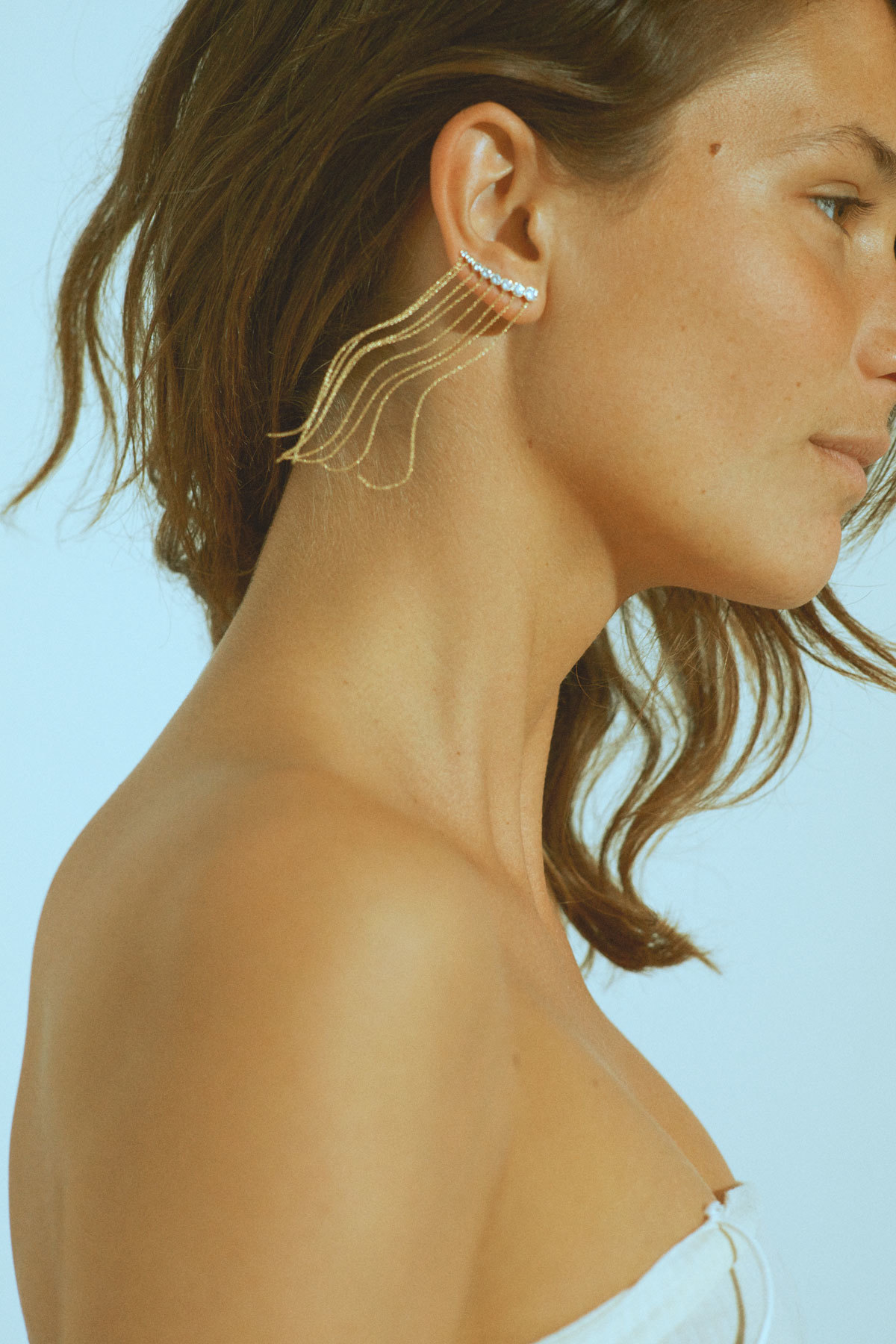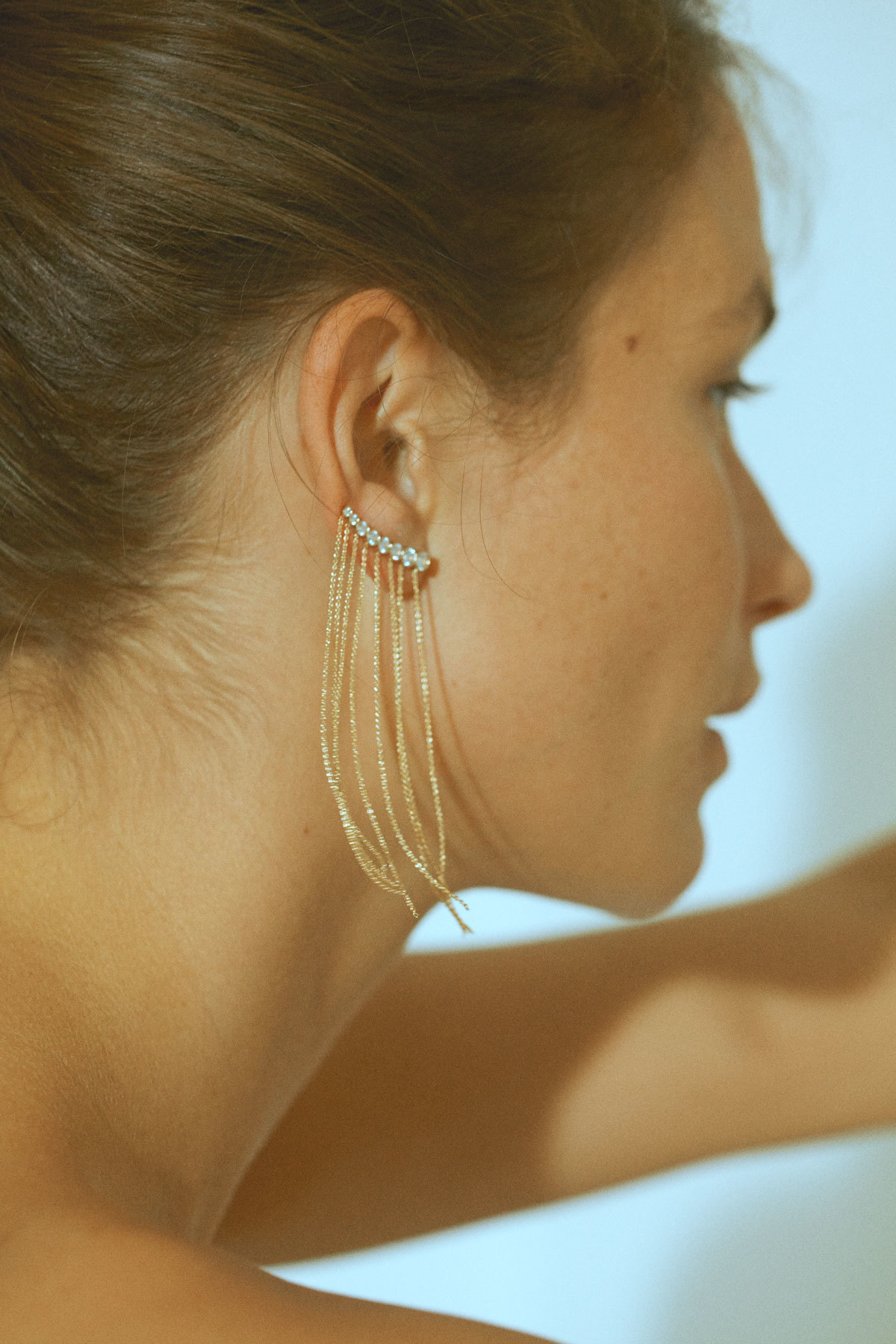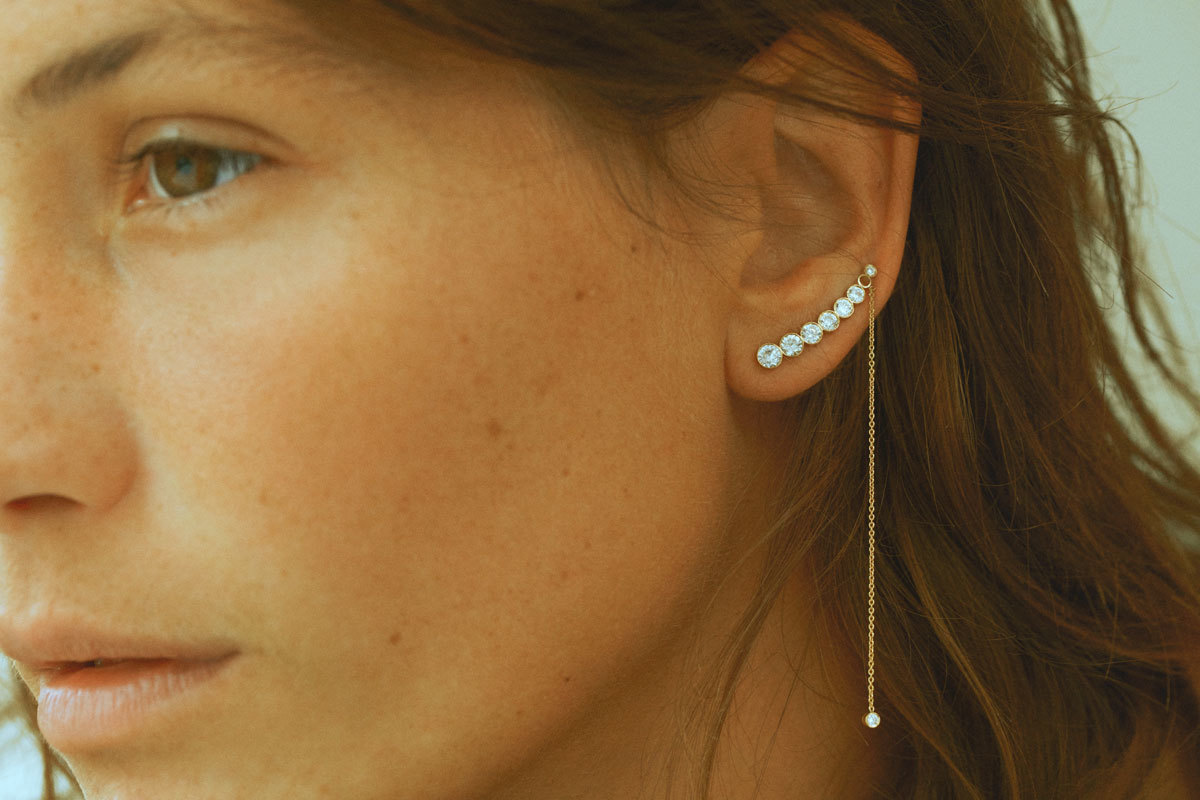For the designers carried by Dover Street Market, the store isn’t just a stockist but a place of new creation. Sophie Bille Brahe learned this when, at the ten-year anniversary of the store a year ago, Sacai’s Chitose Abe declared herself a fan by wearing Bille Brahe’s jewellery for the occasion. The meeting between the Japanese designer and the Danish jeweller soon turned into a collaboration, and in October last year the result was unveiled at Sacai’s spring/summer 16 show in Paris.
It’s the latest step on the way to international fame for Bille Brahe, whose clean-cut but regal jewellery is now so covetable that Dover Street Market had to set up a waiting list for the Sacai collaboration. A descendant of Renaissance astronomer Tycho Brahe – who laid the ground work for Kepler’s discoveries of planetary motions – the young Danish jeweller draws on her bloodline’s colourful past and the treasures that come with it.

What was your creative process like with Sacai?
Chitose wanted the collection to centre around the two pieces she was wearing when we met, and wanted to have a certain element of movement. They showed me a dress with a sleeve that was deconstructed from the rest of the top, and that was kind of the assignment. Very quickly we decided on the pieces we were going to do. You know, sometimes when you create a product you just know when it’s done—when it’s right. I think these pieces are very coherent in terms of being my jewellery but with a very clear twist of Sacai.
How do you design jewellery for the runway?
I don’t think it needs a lot of fuss, but I worried it wouldn’t be visible enough on the runway. Then, when I saw it, I thought, what people want to see now is an honest look so it’s nice that it’s not a theatrical look. I like the jewellery that I do to be honest—that it’s enough in itself. And I don’t think it disappeared in the show. It’s also what Sacai is about: the details.
Now, let’s talk about your family…
What do you want to know? I’m from a very old noble family. I’m a baroness, which was the biggest secret in my life until I was 26. I thought if people found out they wouldn’t like me. Unfortunately, my dad and his dad made some really bad decisions so we don’t have castles anymore. We just have the name… and a lot of beautiful Russian silver chandeliers! My parents’ house is filled with beautiful sculptures. A Thorvaldsen. They have these things that tell a story about my family, but besides that it’s just a name.
How did your family history influence you?
For me it meant being brought up with stories. My parents are not like… you know, there will always be a breadcrumb on the table. If you break an old Chinese bowl, no one will shout at you. The house is very alive. It’s a Pippi Longstocking home.

There must be some incredible pieces in there?
There’s this Chinese cabinet, which has been in the family for generations, and for some reason it’s always been where people would put all the beautiful things they didn’t know where else to put. There’s a beautiful little travel chess play in ivory, a little doll school set, a little pink box from Nice with tiny pink shells. And jewellery and fans and carved pipes. I once found a diamond ring there that my parents didn’t know existed. It’s a treasure chest. Every time I look in it I find something new.
Growing up, was it part of what made you want to create?
I think so, yes.
What do you know about your famous astronomer forefather, Tycho Brahe?
He was quite a character. He had a silver nose. Rumour has it he died because his bladder burst, because he was having dinner with the royals and it was considered impolite to leave to table. My dad has his watch: a big heavy gold watch with an owl hanging off it. It sounds like a cliché, but I’ve always been very interested in star constellations, ever since I was a little girl. And in my work now, I like that constellations are little bit off.
What is your philosophy on jewellery?
When I started doing jewellery I was feeling claustrophobic about the jewellery around me. It was another thing on another thing on another thing. I wanted cleanness, which is recurring theme in my life: easy curtains, a nice marble floor—clean things. Let a diamond be a diamond, let a pearl be a pearl.
How do you approach it?
Maybe it sounds silly, but to me jewellery has always been a way of arranging things. Every time I go to my parents’ home I move around their furniture because I get a little bit stressed if, for instance, colours are put together in the wrong way. This was what I started doing early on with the jewellery, and as my company gets older it’s become clear to me that each collection I do is a very personal story. I did the pearl collection because my mum gave me a pearl necklace when I gave birth to my son, and I had to do a collection only a month after. It had that same magic touch, I thought, as being pregnant: suddenly there’s a baby, like the pearl and the oyster.

How did you become a jeweller?
It wasn’t really a choice. It was what I could do. I attended the Bernadotte School where they supported me in it from an early age. I liked the idea that of being able to do a craft and have a way to make a living from it. When I was in upper secondary school, I thought I was stupid and would never have a chance to go to high school or get an educated. Luckily I did, but already at that point I was looking for places I could become an apprentice. Because since I wasn’t good at writing or reading, I needed to educate my hands to make sure they could support me.
What would your advice be to young people in the same situation?
You need to know that everything is 95 percent hard work and five percent talent. Nothing is easy. It’s not that I don’t believe in talent, but it’s about hard work.
What kind of people buy your jewellery?
I think it’s an educated crowd. Women who know about fashion, who want something limited. Men always like it because it’s not covered in little things, but it’s not the kind of jewellery that a man would buy for his wife. I think men have an idea of something more girly for women.
Is the market good for jewellery now?
After this big financial crisis, I think people prefer spending money on investments they can keep for a long time—something that’s high quality. Before it was very season-based and kind of ‘the cheaper the better’, which I also think is fine but for me, jewellery is about high quality and that fits with now. Something artisanal. I think Dover Street Market is the only place that wasn’t afraid of buying into this feeling of craft. The reason I fell in love with jewellery is because it’s in between craft and fashion and art. It’s in that little triangle, and it can cross over.
Credits
Text Anders Christian Madsen
Photography Letty Schmiterlow
